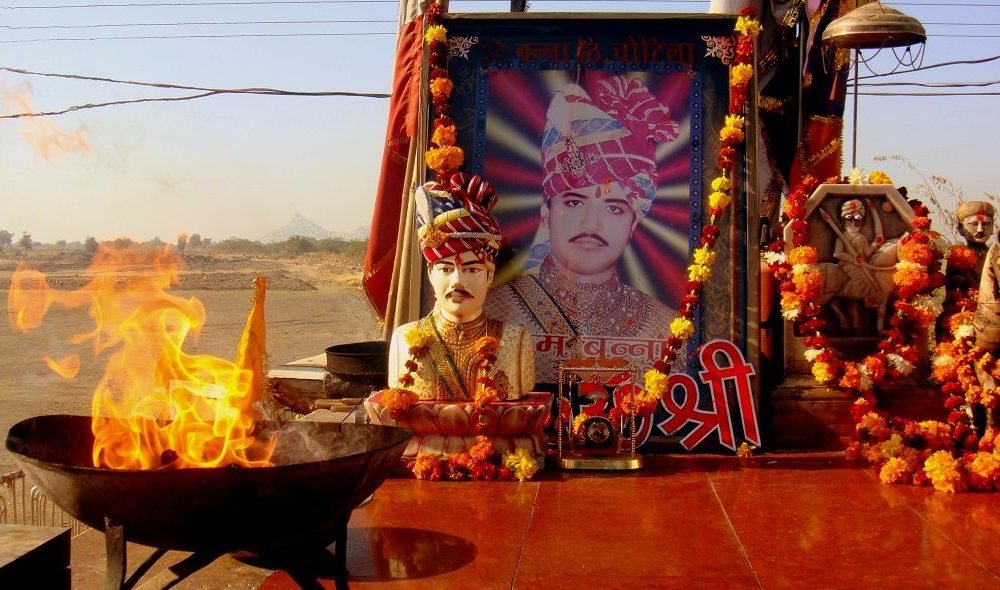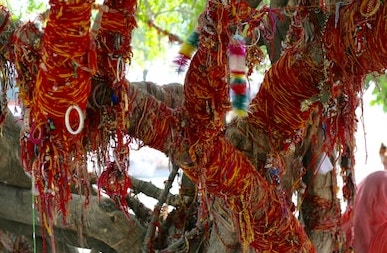By Arushi Kapoor
“The human soul can always use a new tradition. Sometimes we require them.” (Pat Conroy)

India, a land of diversity, is a complex hybrid of the modern and the traditional. While on one hand, a section of people are striving to be labelled ‘modern’ by shunning all the so called ‘backward’ conventional religious and cultural identity, on the other hand there are pockets all over the country where majority of the population still survives on traditional beliefs in a desperate attempt to either make some sense of the enigmatic happenings around them or just to simplify their everyday lives. The process of explanation many times results in birth of new traditions from the local belief system which might or might not partially be based on superstition. Although, word of many of such newfound practices never leaves the proximity of their birthplace, there are some which once in a while are able to establish a stronghold in the popular culture.

One such peculiar local tradition which evolved and popularised in the last three decades revolves around a shrine located near Chotila village in Pali district near Jodhpur in Rajasthan. It is devoted to a deity in the form of a Royal Enfield motorcycle. According to the newspaper reports, Om Singh Rathore, aka Om Banna (Banna, a term for Rajasthani youth) was travelling back from his in-laws place in Pali to his home village Chotila when he he lost control of the bike and allegedly collided with a truck and then the motorcycle rammed into a tree resulting in his on the spot death. The police were notified and it took the body along with the bike to the police station. However, in the morning to everyone’s amazement when the Om Banna’s body was handed over to the family members, the motorcycle was nowhere to be found and it was ultimately located positioned on the accident spot near the fateful tree. As the story goes further, despite the several attempts by the family members and the police including the securing the bike with an iron chain, it always miraculously ended up at the accident spot. This was eventually understood to be a divine signal of Om Banna from afterlife for whom apparently the bike was more of a friend than being just a material object. Thus, Om Banna’s father took upon himself the task of building the shrine around the motorcycle on the same spot for the peace of Om Banna and for the benefit of the society. The temple stands till today and continues to flourish. Aarti is regularly held in the temple and the birth anniversary of Om Banna is an occasion celebrated on the scale of no less than a local festival. This also had the additional benefit of almost negligible number of casualties in the area till then considered to be one of the most accident-prone patches on the highway.
Besides the official story of the newspaper, there are various other extraordinary stories in circulation. As per the words of a few local inhabitants, when the bike was parked unguarded on the accident spot, there were several unsuccessful attempts to steal it, all of the thieves ended up in an accident one way or the other after which either the thieves took it or the bike itself went back to its original position. Another belief is that all the passing drivers should either stop and pray at the temple or should at least honk the horn of their vehicle while passing the temple to gain the blessings of Om Banna who will protect them on their journey.Also, alcohol being an important part of the local Rajput cultural tradition along with the rumour of Om Banna being drunk at the time of the accident has resulted in alcohol being served as Prasad during the time of aarti.

Over the last two decades, the shrine has gained popularity in far-off regions of the state and also in some parts outside Rajasthan, and therefore has emerged as an important pilgrimage centre. The advent of tourists and pilgrims has helped the area to further develop and gain importance among the popular local tradition. Since then, many new shops, dhabas(eateries) and small businesses related to temple belief & ritual system has emerged further contributing to the growth of the area and village. The enhanced reputation of the temple has also led many people to believe in its miraculous powers in all aspects of life including fertility, ailment curing and not just for safe travels.
And therefore, an area, a village which existed almost in oblivion in some remote area of Rajasthan till 1990s has evolved as an important pilgrimage centre based on new traditions which emerged only in the last two decades. A simple accident resulting in rumours of miracles and some superstitions rising from local faith and belief system lead to the birth of an altogether new tradition in the modern times of 21 st century compelling one to reflect on the importance of the still existing parts of society which continue to survive on age old practices and traditions though in a modified form. And also, how the traditional is being appropriated to being modernised and gain recognition in the contemporary world.

